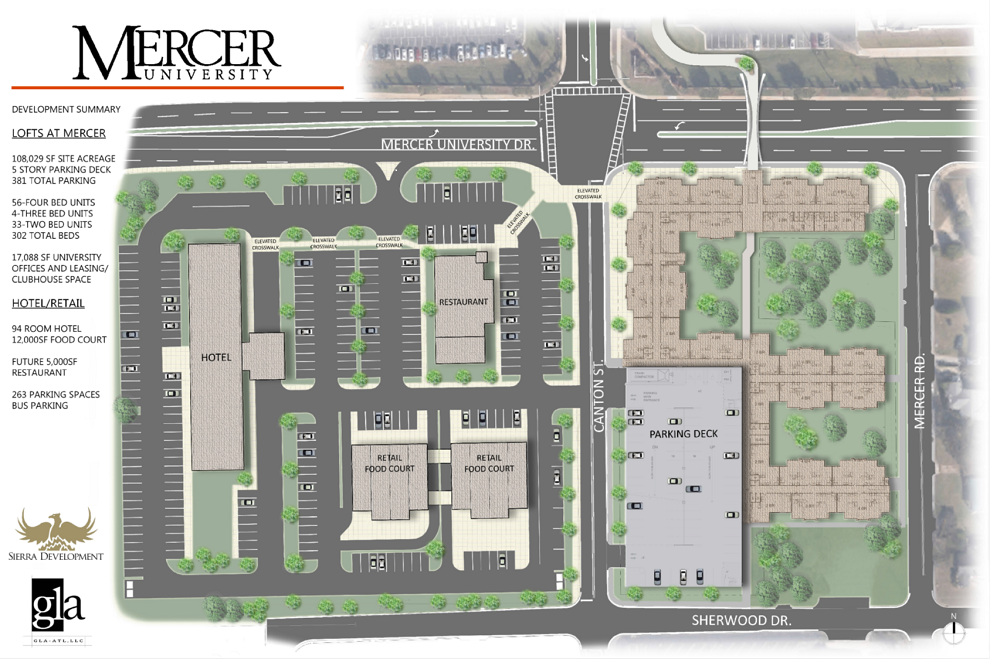
Section Branding
Header Content
Mercer Seeks Public Help For Major Retail, Student Housing Project
Primary Content

Around a long table in the Macon-Bibb Government Center meeting room, commissioners sat side-by-side with Mercer University officials, financial advisers and television news cameras.
Clearly, some commissioners seemed surprised by a presentation from Mercer about a major campus expansion.
Commissioners, such as Al Tillman, expected they'd talk about borrowing $10 million for the removal of blighted structures.
"What happened?" Tillman asked.
Instead Mercer President Bill Underwood spoke about a $40 million to $50 million project that would redefine the entry way to the university off of Mercer University Drive.
Underwood told commissioners that the new development would contain:
• A stylish ramp and stairway - what he called a "stramp" – leading to the existing football field and campus.
• A hotel, restaurant and retail space.
• And critical to a university with growing enrollment - new housing for 300 students.
"This, by the way, would allow us to grow the size of the university by several hundred students," Underwood said.
Underwood and the developer, Jim Daws, also tried to sell committee members on a grand pedestrian bridge connecting the existing campus to the new development.
"It'll be a landmark for folks coming into town," Daws said after the committee meeting. "They're going to see the bridge; they are going to see the glass tower from our building. There will be a wow factor."
Finally, the project would connect to a development near and dear to Macon Mayor Robert Reichert's heart - the Second Street corridor. The corridor plan, already underway, aims to create a pedestrian-friendly passage down Second Street.
"This will not just enhance and promote the immediate area around Mercer," Mayor Reichert said. "This will enhance the connectivity between Mercer and downtown Macon."
Mercer officials asked commissioners to approve borrowing $10 million for the project, which would pay for the bridge and the physical connection from the Second Street corridor to the campus in that area.
Mercer officials say construction must start by January so student housing can be ready by the fall of 2016. The speed of the project put its approval ahead of other large-scale initiatives, like blight removal.
Commissioner Elaine Lucas felt that this put blight removal second in line to the Mercer expansion. Commissioner Virgil Watkins Jr. was miffed by that.
"I'm very interested in how to tear down some houses," Watkins said.
But university officials and financial advisers to the city insisted that the Mercer project needed to be done before the end of the year in order to use financing backed by taxes. This is known as a tax-allocation district and uses tax money in regions designated by local leaders that need improvement. Basically tax money collected above a certain amount can be set aside to support financing for public works projects.
The resolution before commissioners bundled the Mercer project, to be funded through tax-allocation district, with other bond issued projects. The resolution originally allocated $4.9 million for removal of blighted homes, far less than some commissioners expected.
The proposal to finance all the projects finally passed once the blight funding was increased to $10 million.
Final approval by the full commission is still needed. Mayor Reichert is calling for a vote at their November 4th meeting.
Tags: Macon, Macon-Bibb Commission, Mercer, Mercer campus, expansion, retail shops, student housing, hotels, Robert Reichert
